
views
Please note, gas appliances such as a gas log set can cause serious risk to your health and safety if not installed and maintained properly. Such risks include danger of gas leaks, explosion, fire, and carbon monoxide (CO) poisoning. Installation of the gas line should be conducted by a locally licensed and certified professional. Prior to working on your gas log set, ensure the gas line has been fully shut off. Once you're finished working on the logs, ensure there are no leaks by following the procedures in Part 2.
If you notice the smell of gas from the appliance, turn off the gas supply (at the appliance) immediately and contact a certified gas fireplace repair technician for assistance. If you notice the smell of gas, but cannot identify the source, leave your home immediately and contact your local gas company for further assistance.
Prepare the Firebox
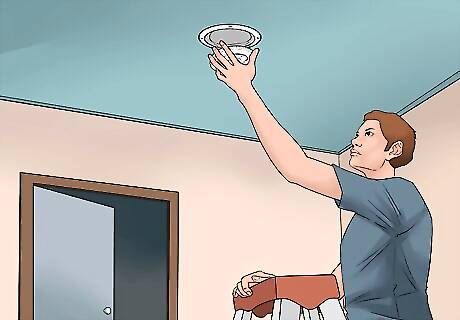
Install a carbon monoxide detector in your home. Carbon monoxide is caused when fuels, such as the natural gas used with your gas logs, are not completely burned. Unsafe levels of carbon monoxide cannot be detected by smell or sight and can cause death. For your safety, a carbon monoxide detector should be installed in the fireplace room and each bedroom in the home. The detector will be your only warning against unsafe levels of carbon monoxide in the home.

Depending on your current configuration, you will need to do one of two things: install a gas line or shut off the gas supply. Shut off the gas supply: If your fireplace is already configured for a gas log application, then be sure to shut off the gas supply before attempting these procedures. Failure to follow this step can result in a fire or explosion that may result in property damage, injury, or even loss of life. Once the gas line is shut off, proceed to Part 1, Step 2. Install a gas line. If you were using the fireplace for a wood burning application, you must first install a gas line before you can install gas logs. This step should be completed by a certified professional. Improper installation of the gas line can cause property damage, serious injury, or death. Once the gas line is installed, proceed to Part 1, Step 5.
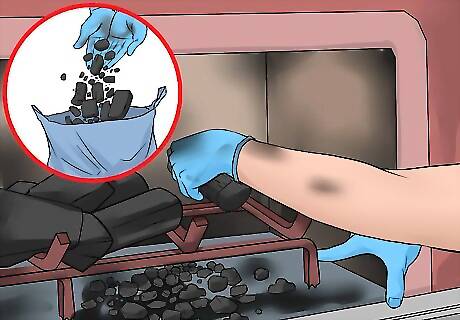
Remove the old gas logs. Put on a pair of work gloves and carefully remove the old logs from the firebox. The logs will typically lift straight off the grate. Ensure you have a box or trash bag to hold the old logs after removal.
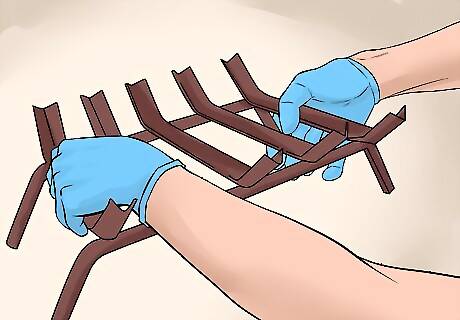
Remove the grate. Once the logs are removed, there will likely be a grate installed in the firebox. Remove the masonry screws that secure the grate to the firebox, and place the grate to the side for disposal.
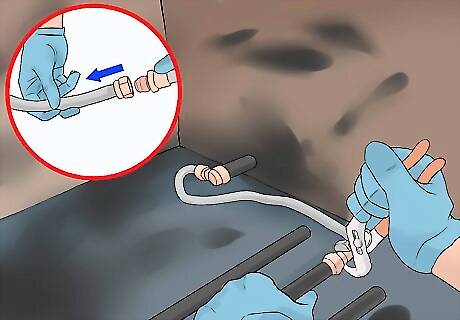
Disconnect gas line from the burner. Ensuring the gas line is shut off first, disconnect the gas line from the burner. Remove the old burner and place aside for disposal.
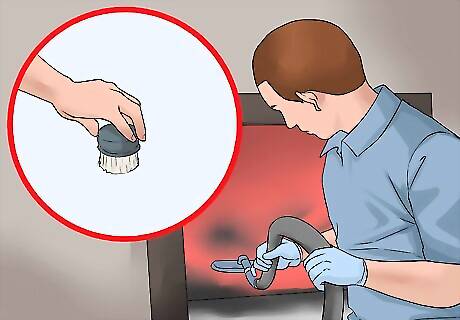
Clean the firebox. Before installing your new log set, thoroughly clean inside the firebox. Sweep up any soot, dirt, or debris, and then use a shop vacuum to remove any finer particles that are difficult to sweep. If the fireplace was used to burn wood, contact a chimney sweep to have the chimney professionally cleaned.
Install new gas logs.

Connect the gas line.Once your firebox is fully clean, and the chimney has been professionally cleaned (for wood burning fireplaces), it's time to connect the gas line to your new burner. Applying pipe thread sealant around the gas line connection on the burner. Attach the gas supply line to the burner. Fasten the connection tightly using a wrench.
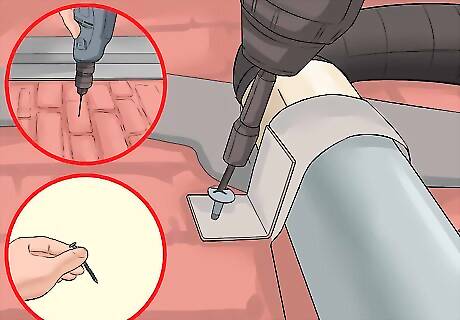
Install the burner. Place the burner in the desired position inside the firebox. Then use a masonry bit to drill holes in the firebox brick. This will make it possible to secure the burner into place with the masonry screws. Finish the installation by screwing the masonry screws into place.
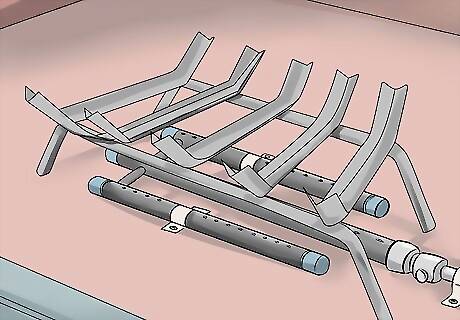
Install the Grate. If your gas log set came with a grate, install the grate over the burners.
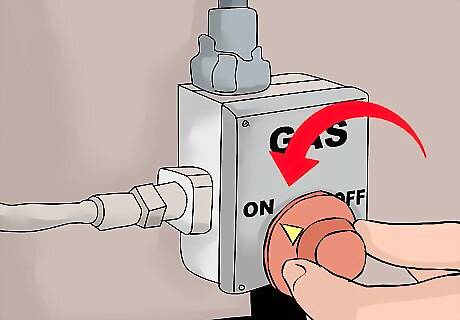
Inspect for leaks. Once your burner and grate are in place, turn on the gas supply to check for leaks. Spray a water and soap mixture along the gas line to check for leaks. Any leaks will be evident by the bubbles created at the leak site. If leaks are found, take necessary steps to either tighten connections or replace faulty hoses.
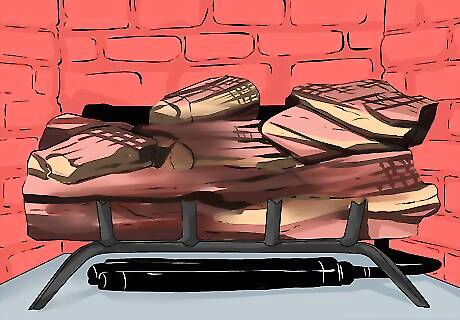
Install the gas logs. Installation of the gas logs will vary by brand and model, so be sure to reference your installation manual for specific directions. In general, the logs will only fit in the correct configuration. Place each log over the intended pin until all logs are in place.
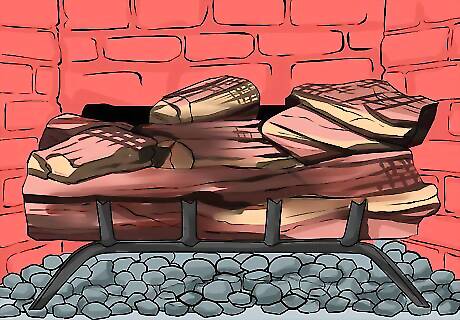
Install accessories. If your gas log kit came with accessories, such as ash covered coals and rock wool, spread them around to give the set a realistic touch.
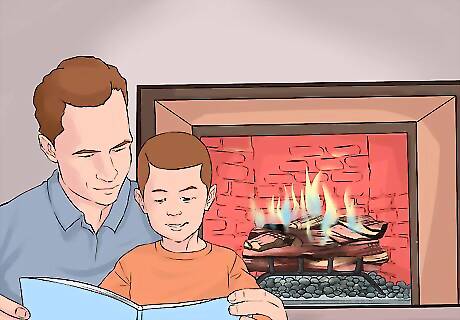
Enjoy. You're done. Turn on your gas fireplace and enjoy the beautiful, hassle-free warmth of your gas burning fireplace.













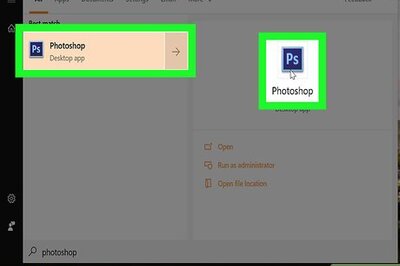





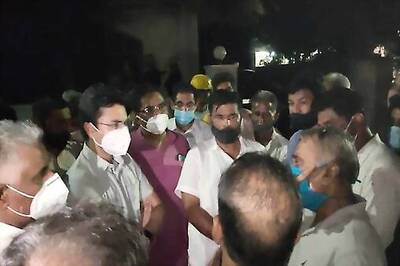
Comments
0 comment